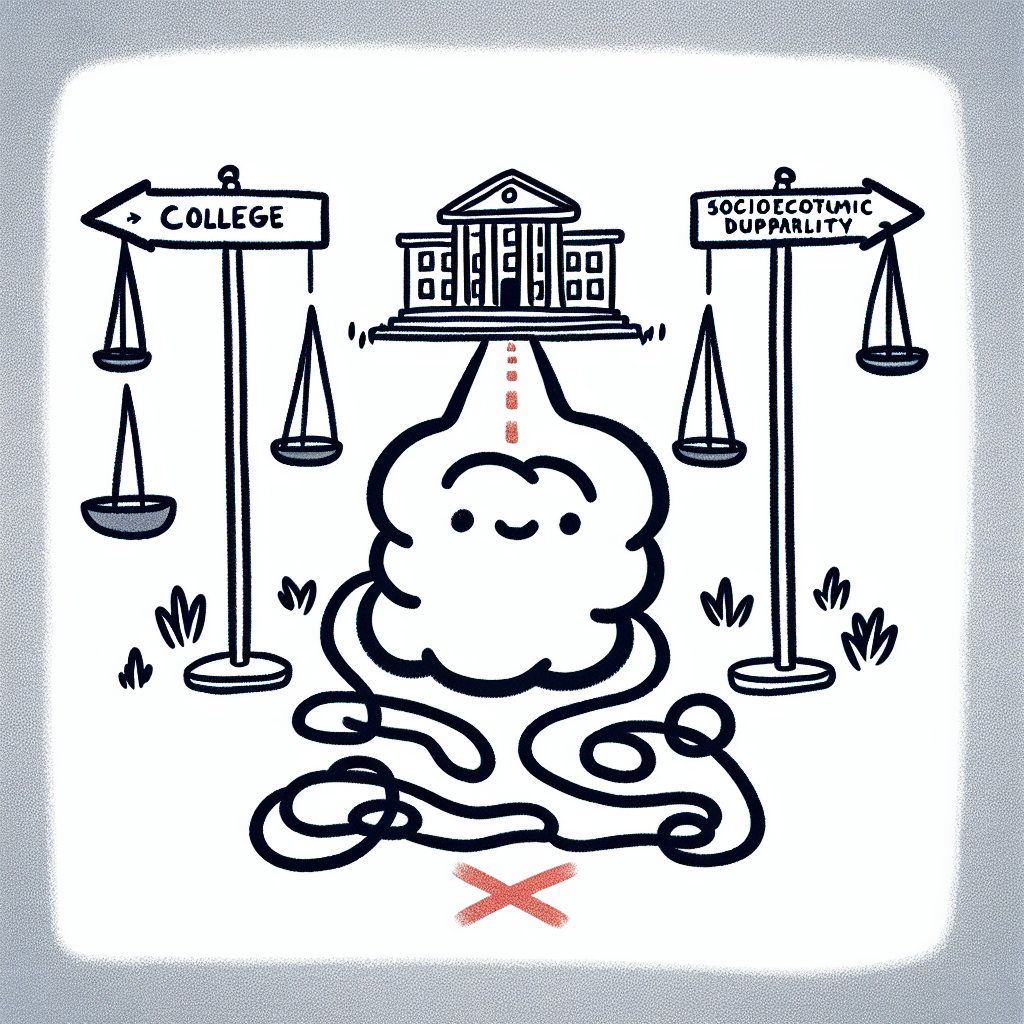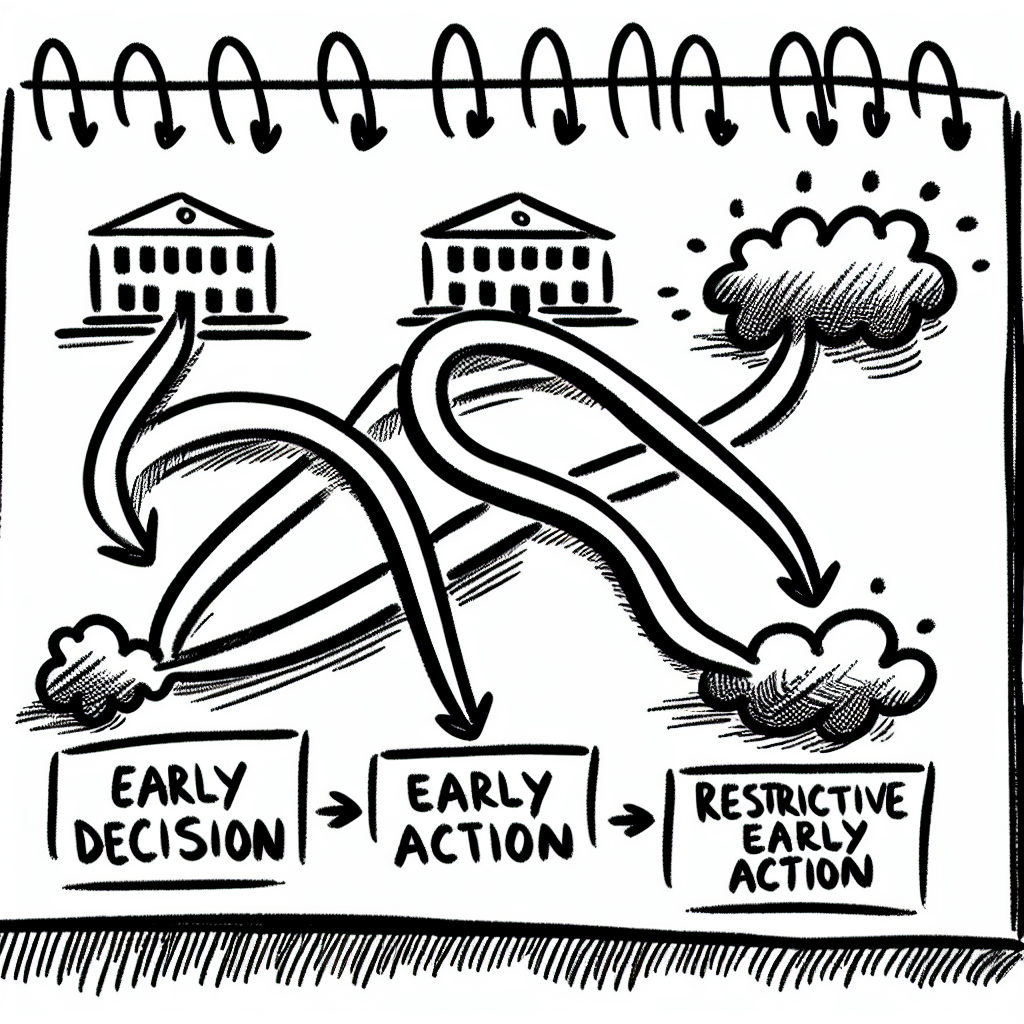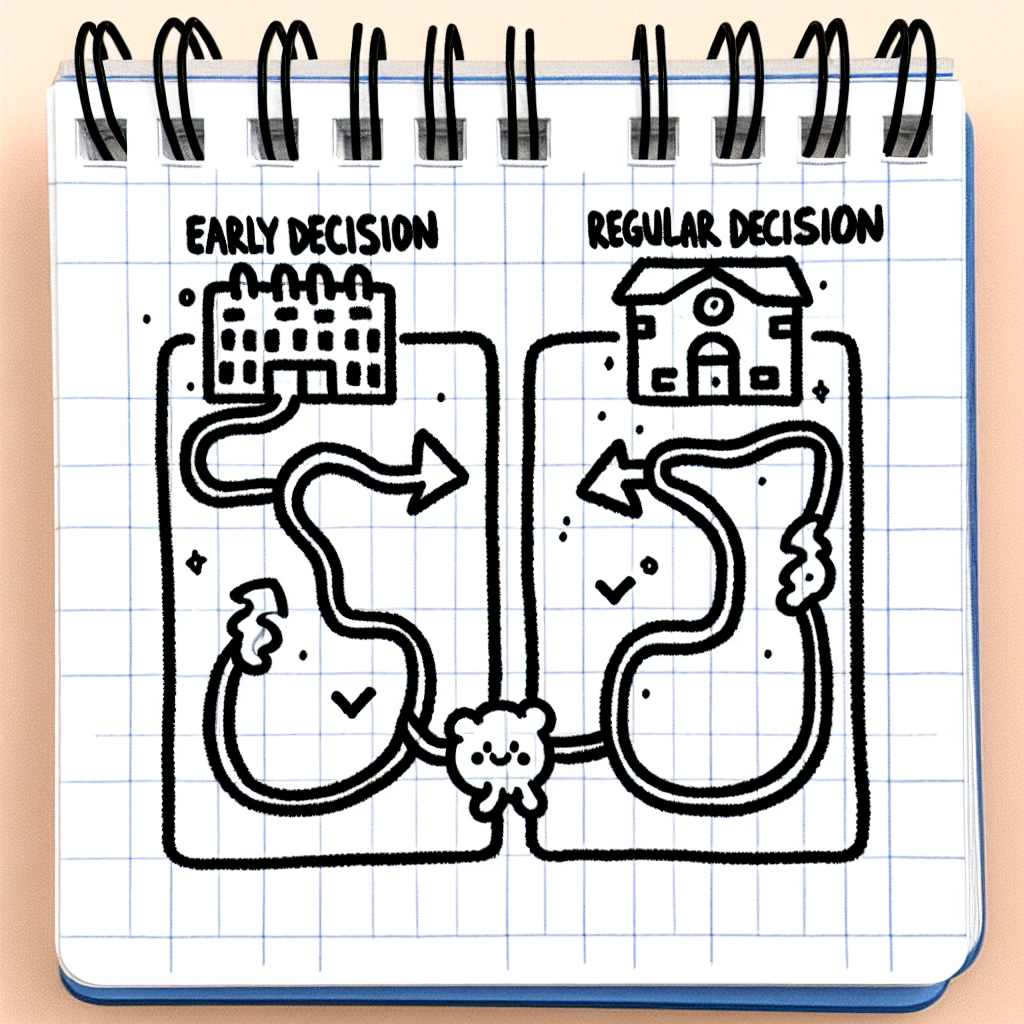Introduction
Navigating the college admissions process for 2025 requires a clear understanding of the various application options available to students. Most colleges offer multiple application timelines, each with its own set of rules and implications. The primary options include Early Decision (ED), Early Action (EA), Restrictive Early Action (REA), and Regular Decision (RD).
Early Decision (ED) is a binding agreement where students commit to attend the college if accepted. This option typically has earlier deadlines, often in November, and students receive decisions by December. Early Action (EA) also has early deadlines but is non-binding, allowing students to apply to other schools and make a final decision by May 1. Restrictive Early Action (REA) is a non-binding option with some limitations—students may not apply early to other private institutions, depending on each college's specific policy.
Regular Decision (RD) is the most common timeline, with deadlines usually in January and decisions released in the spring. This pathway offers the most flexibility and time for students to prepare their applications.
Understanding the differences between early decision vs regular decision 2025 is crucial for students aiming to create an effective application strategy. Each option affects admission chances, financial aid opportunities, and overall college planning, making informed choices essential in the current admissions landscape.

Understanding Admissions Rounds
Early Decision (ED)
Early Decision (ED) is a binding admissions option where students commit to attending a college if accepted. This route is ideal for applicants who have a clear first-choice school and are ready to make a commitment early in the process. One of the main strategic advantages of applying ED is the typically higher acceptance rates compared to other application rounds. According to Wikipedia, students applying under ED often benefit from a more favorable admissions landscape, as colleges can count on a higher yield from these applicants.
Early Action (EA) and Restrictive Early Action (REA)
Early Action (EA) and Restrictive Early Action (REA) are non-binding admissions options that allow students to apply early and receive decisions ahead of the Regular Decision timeline. With EA, students can apply to multiple institutions and retain the freedom to choose among various offers. REA, on the other hand, places limitations on where else a student can apply early, though it is still non-binding.
Both EA and REA applicants often experience higher acceptance rates than those applying Regular Decision. As highlighted by US News, these early rounds can give students a competitive edge, though they must carefully review each school’s specific policies.
Regular Decision (RD)
Regular Decision (RD) is the standard admissions process with application deadlines typically falling in January and decision notifications released in the spring. RD is non-binding and allows students to compare admission offers and financial aid packages before making a final decision. However, acceptance rates in this round are usually lower than those in ED or EA. According to US News, colleges often admit a smaller percentage of RD applicants, making it a more competitive round overall.
Understanding these admissions rounds is essential when evaluating early decision vs regular decision 2025 options. Each round offers distinct advantages and trade-offs based on a student’s readiness and strategic goals.

Data Snapshot: The Class of 2025
A close look at early decision vs regular decision 2025 data reveals clear trends in college admissions. Among 290 ranked colleges analyzed, 257 institutions reported higher acceptance rates for early applicants than for those who applied through regular decision, according to US News.
For example, at the University of Pennsylvania, the early decision acceptance rate for the Class of 2025 was 15%, compared to a regular decision acceptance rate below 5%. Similarly, at Amherst College, early decision applicants were accepted at a rate of 29%, while regular decision applicants faced a significantly lower 6% acceptance rate.
These numbers highlight the strategic advantage of applying early at many selective institutions. On average, early decision acceptance rates were significantly higher than regular decision rates across the board, underscoring the importance of understanding the early decision vs regular decision 2025 landscape when planning college applications.

Strategic Benefits of Applying Early
Higher Acceptance Rates
One of the most compelling reasons to choose early decision over regular decision in 2025 is the significantly higher acceptance rates. Many colleges admit a larger percentage of early decision applicants than regular decision applicants. According to Wikipedia, this trend is consistent across numerous institutions, making early decision a strategic advantage for students who are confident in their first-choice school.
Priority Consideration
Another strategic benefit of applying early is the potential for priority consideration in areas beyond admissions. Some colleges offer early applicants first choice in housing assignments and roommate selection. According to US News, this can give students a logistical and social head start in preparing for college life.
Demonstrated Interest
Applying early also serves as a strong signal of demonstrated interest. Admissions officers often interpret early decision applications as a clear sign that a student is committed to attending their institution. This level of enthusiasm can positively influence admissions decisions, especially at selective schools that value yield rates.
Earlier Peace of Mind
Finally, students applying early can gain peace of mind by receiving admissions decisions well before the regular cycle concludes. This early notification reduces uncertainty and provides time to plan for housing, financial aid, and other college logistics. For applicants to the class of 2025, this could mean a smoother transition from high school to college.

Critical Considerations Before Applying Early
When weighing early decision vs regular decision 2025, students must closely examine the implications of committing early. The early decision (ED) process carries significant consequences that can affect both financial and strategic outcomes.
Binding Nature of ED
Applying through early decision means entering a binding agreement. If admitted, the student is required to attend that college and withdraw all other applications. This commitment restricts the ability to compare financial aid packages from multiple institutions. As a result, students and families must be financially prepared to accept the offer without knowing if better aid might have been available elsewhere. The lack of flexibility can be a serious concern for those needing aid to make college affordable.
Restrictions with REA
Restrictive Early Action (REA), unlike ED, is not binding, but it does come with limitations. Applicants using REA may be barred from applying early to other private institutions. This restricts strategic options for students hoping to leverage multiple early applications. According to US News – Restrictive Early Action, understanding the specific rules of each college’s REA policy is essential to avoid unintentionally breaking application agreements.
Socioeconomic Disparities
One of the critical equity issues in the early decision vs regular decision 2025 debate is how ED may benefit wealthier applicants. Because ED limits the ability to compare financial aid, students from higher-income families, who are less dependent on aid, are more likely to apply early. This creates a system that can disadvantage lower-income students. As highlighted by AP News, this dynamic raises concerns about fairness and access in college admissions, as the early applicant pool may not reflect the full diversity of the student body.

Who Should Consider Early Decision or Early Action?
Ideal Candidates for Early Decision (ED)
Students who are certain about their first-choice college and have a strong academic record by the end of junior year should consider applying through early decision. ED is a binding commitment, so it's best suited for applicants who are confident that the school is their top choice and are ready to commit if accepted. This route also works well for students who do not need to compare financial aid offers from multiple schools, as accepting an ED offer means agreeing to the financial aid package provided without negotiation.
Ideal Candidates for Early Action (EA) or Restrictive Early Action (REA)
Early action is a good fit for competitive applicants who want the benefit of early admissions decisions without the pressure of a binding agreement. Students applying EA or REA can still apply to other colleges and compare financial aid packages before making a final decision. These options are ideal for those who want early feedback from colleges to help shape the rest of their application strategy while maintaining flexibility in their final college choice.
Understanding the differences in early decision vs regular decision 2025 policies can help students choose the path that aligns best with their academic preparation, financial needs, and college preferences.

When Regular Decision Makes Sense
Choosing between early decision vs regular decision 2025 depends on a student's individual circumstances. Regular decision may be the better fit in several common situations.
One key reason to apply regular decision is the opportunity to improve academic performance during the first half of senior year. Students who want to boost their GPA, retake standardized tests for higher scores, or strengthen their extracurricular involvement may benefit from the extra time that regular decision provides.
Another important factor is financial aid. Early decision is binding, which limits a student’s ability to compare financial aid packages across multiple schools. Regular decision allows applicants to evaluate and compare offers before committing, which can be essential for families who need to make cost-effective choices.
Finally, students who are unsure about which college is their top choice may prefer regular decision. The non-binding nature of regular decision gives them time to visit campuses, research programs, and consider all options before making a final commitment.
In these cases, applying regular decision offers greater flexibility and can lead to more informed decisions during the college admissions process.

How to Decide: A Step-by-Step Guide
Deciding between early decision vs regular decision 2025 requires careful evaluation. Follow these steps to make an informed choice:
1. Self-Assessment
Start by assessing your academic readiness. Are your grades, test scores, and extracurriculars strong enough to compete in an early decision pool, which often attracts top-tier applicants? Next, consider your financial circumstances. Since early decision is binding, you won’t be able to compare financial aid offers. Finally, reflect on your school preferences. Are you absolutely sure about your top-choice school? Early decision makes sense only if you're fully committed.
2. Research
Gather data on admission statistics and policies. Early decision applicants often have higher acceptance rates, but this varies by institution. Understand each school’s deadlines and requirements for early decision vs regular decision 2025. Some schools offer Early Decision I and II, each with different timelines. Make note of these when planning your application.
3. Consultation
Talk to your school counselor to gauge how competitive your application is. Discuss financial aid concerns with your family and consider speaking with a financial aid officer at your top-choice school. Their input can help clarify whether early decision is a viable option for your situation.
4. Application Strategy
Build a balanced college list that includes reach, match, and safety schools. Decide where early decision might give you an edge and where regular decision might be a better fit. Remember that your early decision choice should reflect a school you are genuinely excited about and willing to commit to without comparing other offers.
By working through these steps, you can approach the early decision vs regular decision 2025 process with clarity and confidence.

Conclusion
When weighing early decision vs regular decision 2025, it’s important to understand the advantages and trade-offs of each path. Early decision (ED) can offer increased chances of admission for students who are certain about their top-choice school and ready to commit. However, it is binding and limits your ability to compare financial aid offers. Regular decision (RD), on the other hand, provides more flexibility and time to strengthen your application, but may come with more competitive admissions.
Students should make informed, personalized decisions based on their academic readiness, financial needs, and how well a school aligns with their goals. There is no single path to admission that works for everyone. Regardless of the route—ED or RD—strategy, fit, and thorough preparation are the most important factors for success in the college application process.

Further Reading and Resources
To better understand the differences between early decision vs regular decision 2025, the following resources provide valuable insights:
- Colleges Where Early Applicants Have an Edge – US News: This article highlights institutions where applying early can significantly improve a student's chances of admission.
- What to Know About Early Action and Early Decision – US News: Offers a breakdown of different early application options, helping students weigh early decision vs regular decision 2025.
- What to Know About Restrictive Early Action – US News: Explains restrictive early action and how it compares to other early deadlines.
- Early Decision – Wikipedia: A general overview of early decision policies, including historical context and comparisons to regular decision.
- Editorial Critique of ED – AP News: Offers a critical perspective on the fairness and accessibility of early decision in the context of college admissions.
These resources can help students and families make informed decisions about applying early decision vs regular decision 2025.














